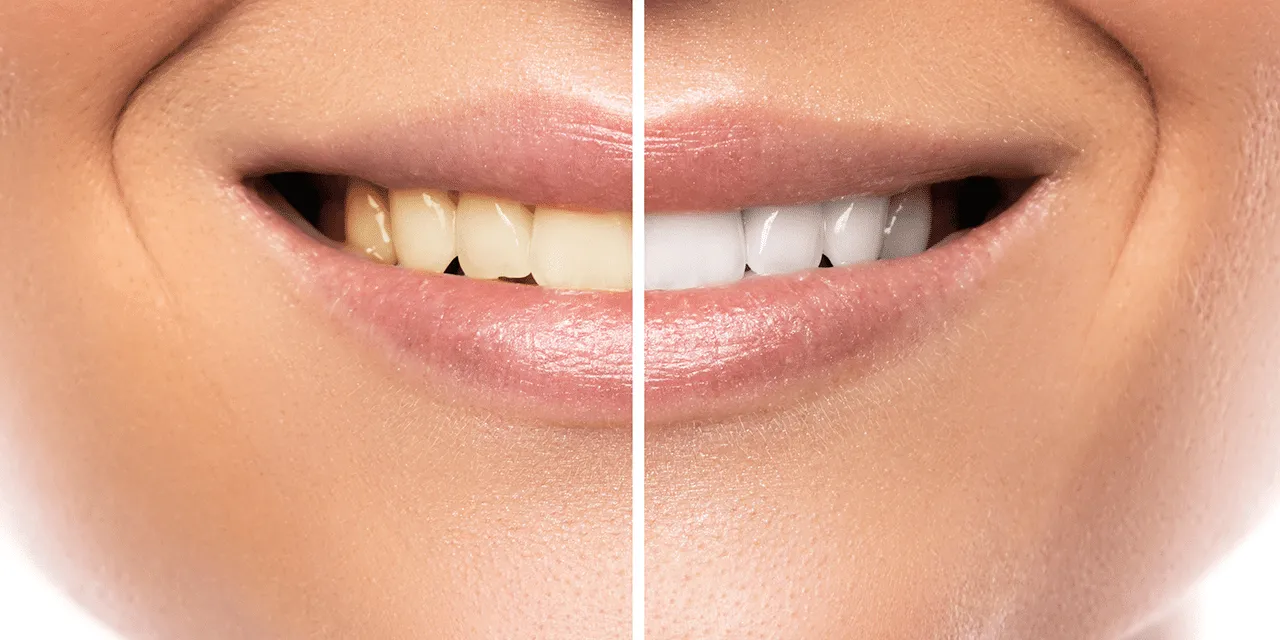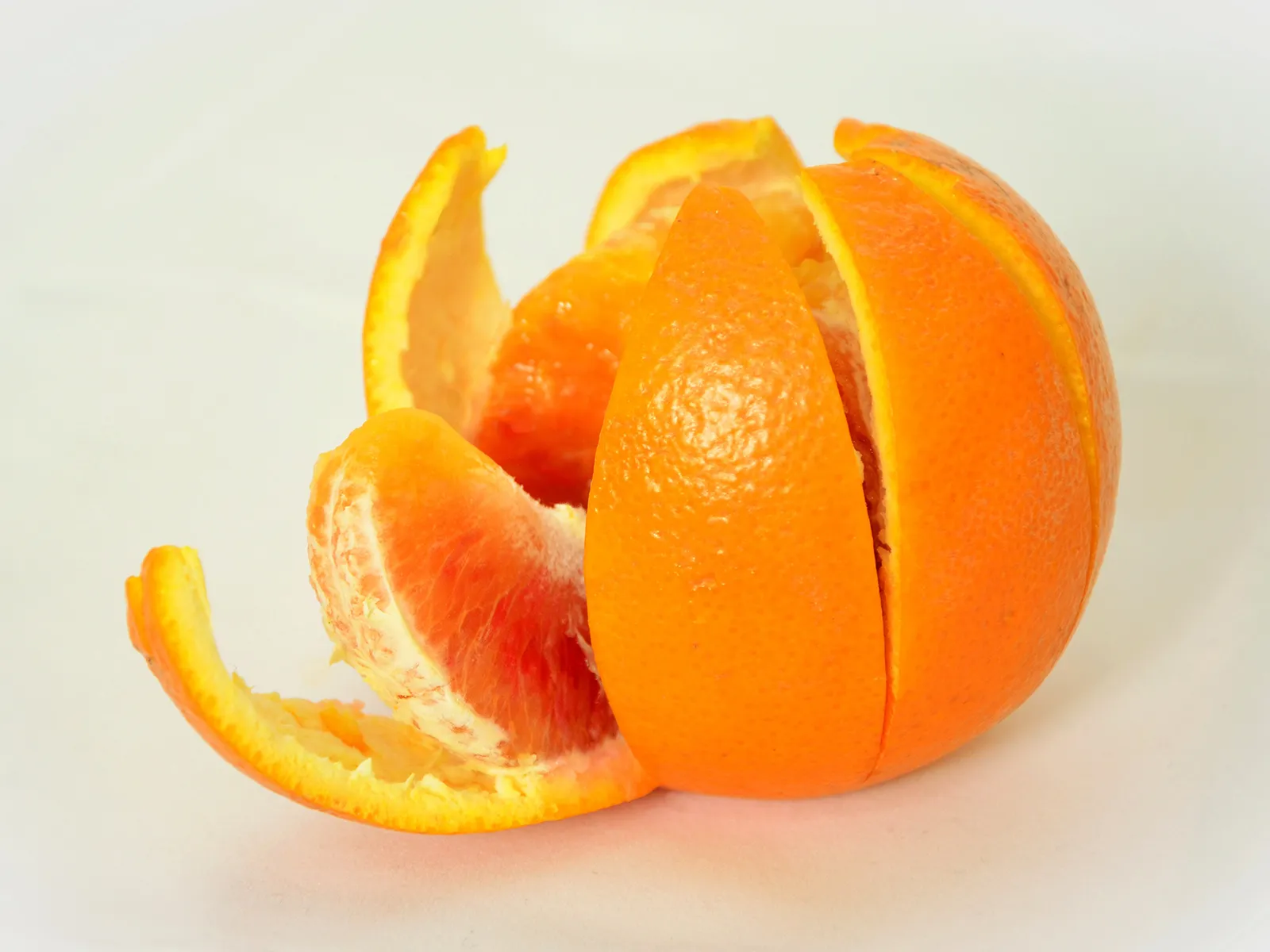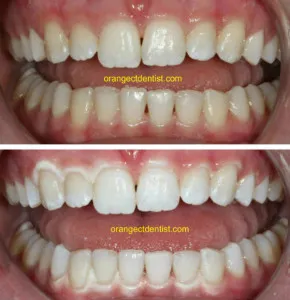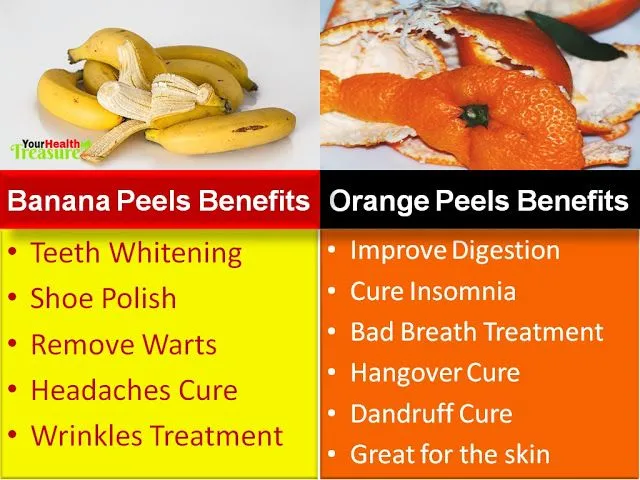What is Orange Peel Teeth Whitening
Orange peel teeth whitening is a natural, at-home method for potentially brightening your smile using the citrus fruit’s peel. This DIY approach has gained popularity as an alternative to commercial teeth whitening products, offering a more accessible and potentially cost-effective solution. The method involves using the inside of an orange peel, which contains certain compounds believed to aid in removing stains and promoting a whiter appearance of the teeth. It is important to consider that the effectiveness of orange peel teeth whitening may vary from person to person, and scientific evidence supporting its efficacy is limited. Nonetheless, it remains a popular method among individuals looking for natural alternatives to enhance their dental aesthetics.
Why Use Orange Peel for Teeth Whitening
People are drawn to orange peel for teeth whitening due to its natural origin and the belief in its gentle approach compared to some chemical-based whitening treatments. The appeal lies in the potential to achieve a brighter smile without harsh chemicals, making it suitable for those with sensitive teeth or a preference for natural remedies. Orange peels are readily available and inexpensive, making it an accessible option for many. Additionally, some individuals are attracted to the perceived environmental friendliness of this DIY method, reducing the reliance on manufactured products and their packaging. The idea of utilizing a commonly discarded item in a beneficial way also contributes to its allure. However, it is important to recognize that scientific evidence supporting the effectiveness of orange peel whitening is limited, and results can vary greatly.
The Science Behind Orange Peel Whitening

The science behind orange peel whitening is rooted in the presence of compounds such as limonene and citric acid found in the peel. Limonene, a natural solvent, is believed to help dissolve stains and plaque buildup on the teeth’s surface. Citric acid acts as a natural bleaching agent, potentially aiding in removing discoloration. These components are thought to work synergistically, offering a mild abrasive action that can help to polish and brighten the teeth. While these compounds have properties that could contribute to teeth whitening, it’s important to emphasize that scientific studies specifically validating the effectiveness of orange peel teeth whitening are limited. The concentration of these compounds, the application method, and the individual’s oral health all contribute to the variability of results. Further research is needed to fully understand the mechanisms and efficacy of orange peel whitening.
How Does Orange Peel Whiten Teeth
Orange peel is thought to whiten teeth through a combination of mechanical and chemical actions. The textured surface of the peel can act as a gentle abrasive, helping to physically scrub away surface stains and plaque. The citric acid and limonene present in the peel are believed to work on a chemical level. Citric acid helps to break down and dissolve stains, while limonene acts as a solvent, further aiding in the removal of discoloration. The peel’s components are believed to work together, potentially removing superficial stains caused by coffee, tea, and other dietary factors. However, it is critical to approach this method cautiously, as the acidity of the orange peel could potentially erode enamel over time if used excessively. Always consider the potential effects on enamel health when exploring this method.
Getting Started with Orange Peel Whitening
Embarking on your orange peel teeth whitening journey involves several simple steps to ensure you’re prepared. Begin by gathering fresh, organic oranges, if possible, to minimize exposure to pesticides. Ensure you have a clean area to work, and consider having a soft toothbrush on hand to help with the application. Familiarize yourself with the process, and be sure to understand the potential risks involved, particularly regarding enamel erosion. It’s important to understand that the effectiveness and safety of this method can vary from person to person. Always perform a patch test on a small area of your teeth to check for any adverse reactions. Finally, be realistic with your expectations, as the results may not be as dramatic or rapid as professional treatments. The approach is generally a long-term process and requires consistent application.
Selecting the Right Oranges

Choosing the right oranges is a crucial step for effective and safe orange peel teeth whitening. Opt for ripe, organic oranges whenever possible. Organic oranges are grown without synthetic pesticides or fertilizers, which could potentially come into contact with your teeth during application. The ripeness of the oranges is also important because it affects the concentration of the beneficial compounds in the peel. Make sure the oranges are fresh and free from bruises or signs of spoilage. When selecting oranges, consider the size and the thickness of the peel, since thicker peels often contain more of the beneficial compounds. Store the oranges properly to maintain their freshness and maximize the effectiveness of the whitening process. Proper selection sets the foundation for a safer and potentially more effective teeth whitening experience.
Preparing the Orange Peel
Preparing the orange peel correctly is key to maximizing its effectiveness and minimizing any risks. After selecting your oranges, wash them thoroughly to remove any dirt or residue. Next, carefully peel the orange, taking care to separate the white pith from the peel. It’s the inside of the peel, the part that was in contact with the orange, that is generally used for whitening, since it contains the active compounds. You can either use the peel immediately or dry it for future use. If drying, allow the peel to dry naturally or use a food dehydrator at a low temperature to preserve the beneficial components. Store the dried peel in an airtight container in a cool, dark place. Whether using fresh or dried peel, make sure it’s clean and free from any contaminants before application. Proper preparation is a fundamental step for a successful and safe teeth whitening attempt.
Step by Step Guide How to Apply Orange Peel
Applying orange peel to whiten your teeth involves a series of steps designed for effective and safe use. Start by thoroughly cleaning your teeth with a soft toothbrush to remove any surface debris. Next, take a piece of the prepared orange peel, ensuring the white side is facing your teeth. Gently rub the inside of the orange peel against your teeth, focusing on areas with stains. Avoid applying excessive pressure to prevent damage to your enamel. Perform this for 2-3 minutes. After the application, rinse your mouth thoroughly with water to remove any remaining orange peel residue. Finally, brush your teeth gently to complete the process. Always monitor your teeth for any signs of sensitivity or irritation, and adjust the frequency of application as needed. Consistency and caution are key when incorporating orange peel teeth whitening into your oral hygiene routine.
Proper Application Technique

The technique you use when applying the orange peel can significantly impact the effectiveness and safety of the process. Gently rub the inner, white part of the peel against your teeth. Avoid applying too much pressure, as this can potentially damage your enamel. Focus on individual teeth or areas with visible stains. You can use circular motions to ensure even coverage and thorough application. It is important to maintain a consistent speed and rhythm to prevent uneven whitening. Make sure to reach all surfaces of the teeth, including the front, back, and sides, for a comprehensive approach. Pay close attention to the gum line, as stains often accumulate in these areas. Monitor your teeth for sensitivity during the application and stop immediately if you experience any discomfort. A careful and mindful technique will optimize your results while reducing the risk of adverse effects.
How Long Should You Apply
Determining the optimal duration for applying orange peel is vital for achieving the best results without compromising your oral health. It’s generally recommended to apply the orange peel for about 2 to 3 minutes per session. This duration offers sufficient contact time for the active compounds in the peel to interact with the stains on your teeth. However, it is crucial to monitor your teeth for any signs of sensitivity or discomfort. If you experience any adverse reactions, such as increased sensitivity or irritation, reduce the application time or discontinue use. The frequency of application will vary based on your individual needs and the sensitivity of your teeth. It is best to start with a lower frequency, such as once or twice a week, and then gradually increase it if you do not experience any problems. Remember that patience is important, and consistent, moderate use is generally safer than aggressive or excessive application.
After Application
After you have applied the orange peel, there are important steps to follow to ensure the best results and protect your oral health. Rinse your mouth thoroughly with water to remove any remaining orange peel residue and to neutralize the acidity. You can also gently brush your teeth with a soft-bristled toothbrush to remove any lingering particles and to further polish the surface. It is advisable to avoid eating or drinking anything for at least 30 minutes after the application. This helps to prevent any potential staining and gives your enamel a chance to re-mineralize. Observe your teeth for any changes in sensitivity or appearance. If you notice any adverse effects, discontinue use and consult a dentist. Maintaining a regular oral hygiene routine, including brushing, flossing, and regular dental check-ups, is crucial for optimal results and maintaining overall oral health.
Potential Risks and Considerations

When considering orange peel teeth whitening, it’s essential to be aware of the potential risks and considerations involved. The acidity of the orange peel, particularly citric acid, can potentially erode the enamel over time, leading to increased sensitivity and a higher risk of cavities. The abrasive nature of the peel could, with excessive use, also contribute to enamel wear, which can make your teeth more susceptible to staining. The effectiveness of orange peel teeth whitening is not scientifically proven, and results may vary significantly depending on individual factors like the type of stains, the enamel health, and the frequency of application. It’s important to understand that this method is not a substitute for professional dental care and should not be used as a treatment for existing dental problems. You must be prepared to discontinue use if any adverse reactions occur. Always consult with a dentist before starting any new teeth whitening method.
Possible Side Effects
Using orange peel for teeth whitening can potentially lead to several side effects. The most common side effect is increased tooth sensitivity, especially to hot or cold foods and drinks. This is typically caused by the acidity of the peel, which can erode the enamel, exposing the underlying dentin. Some individuals may experience gum irritation or inflammation, as the peel can be abrasive, leading to soreness or tenderness. In rare cases, excessive or prolonged use could lead to enamel erosion, making the teeth more vulnerable to decay. In addition to these dental side effects, some people may experience allergic reactions or skin irritation if they are sensitive to citrus fruits. Should you encounter any of these side effects, it’s crucial to stop using the orange peel and consult with a dental professional immediately.
Consulting with a Dentist
Consulting with a dentist before trying orange peel teeth whitening is highly recommended. Your dentist can assess the health of your teeth and gums, identify any existing problems like cavities or enamel erosion, and advise you on whether this method is suitable for you. They can offer an expert opinion based on your oral health condition and provide insights into the potential risks and benefits of orange peel whitening. Your dentist can also offer professional teeth cleaning and whitening options, which may be more effective and safer than DIY methods. They can also provide guidance on oral hygiene practices and recommend the best course of action to achieve the desired results safely. Professional guidance will help you make an informed decision, ensuring you achieve a brighter smile while maintaining your oral health.
Alternatives to Orange Peel Whitening

If orange peel teeth whitening doesn’t seem like the right choice, or if you’re looking for more reliable methods, several alternatives can help you achieve a brighter smile. These range from professional treatments administered by a dentist to over-the-counter products that you can use at home. It’s important to consider your budget, time constraints, and the level of desired results when exploring these alternatives. Choosing the right method often depends on your individual needs and the level of staining. Weighing the pros and cons of each option will enable you to select the most suitable and safe approach for enhancing your smile.
Professional Teeth Whitening
Professional teeth whitening offers the most effective and reliable results, typically involving the use of potent bleaching agents under the supervision of a dental professional. There are two main types of professional whitening procedures: in-office whitening and take-home whitening kits provided by your dentist. In-office whitening involves applying a concentrated hydrogen peroxide or carbamide peroxide solution to your teeth, often using a special light or laser to accelerate the whitening process. These treatments can produce dramatic results in a single session, brightening teeth several shades. Take-home whitening kits involve custom-fitted trays and lower-concentration bleaching gels that you apply at home over a period of time. Both methods are generally considered safe because they are administered under the guidance of a dental professional, who can monitor your teeth and gums for any adverse reactions and provide advice on how to manage sensitivity.
Over the Counter Whitening Products
Over-the-counter (OTC) teeth whitening products provide a convenient and more affordable alternative to professional treatments. These products range from whitening toothpaste and strips to gels and trays. Whitening toothpastes usually contain mild abrasives or chemicals that help remove surface stains, leading to a slight brightening effect. Whitening strips, gels, and trays contain lower concentrations of bleaching agents, such as hydrogen peroxide or carbamide peroxide, and can provide more noticeable results. While OTC products are generally safe, it’s important to follow the instructions carefully and be aware that they might not be as effective as professional treatments. It’s also important to be cautious and consult with a dentist if you have sensitive teeth or any existing dental issues, as these products can sometimes cause irritation or sensitivity.
Conclusion

Teeth whitening with orange peel is a popular natural approach that has been around for some time. While the process is appealing for its simplicity and accessibility, it is important to approach this method with caution. The potential for enamel erosion and the lack of definitive scientific evidence supporting its effectiveness necessitate a careful evaluation. It is always best to consult with a dentist before trying any new teeth whitening method to ensure it is appropriate for your individual oral health. Exploring professional treatments or over-the-counter alternatives may provide more reliable and safer ways to achieve a brighter smile. Ultimately, making informed choices and prioritizing the health of your teeth is key when pursuing teeth whitening methods.
